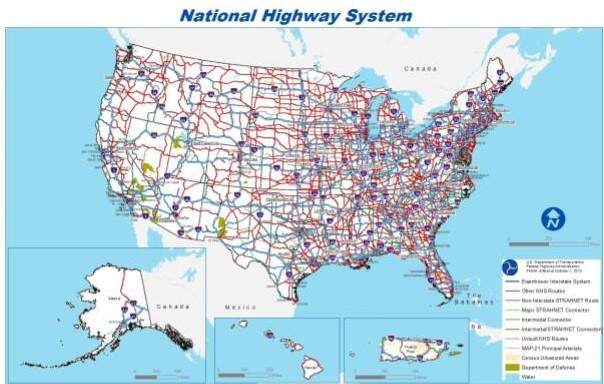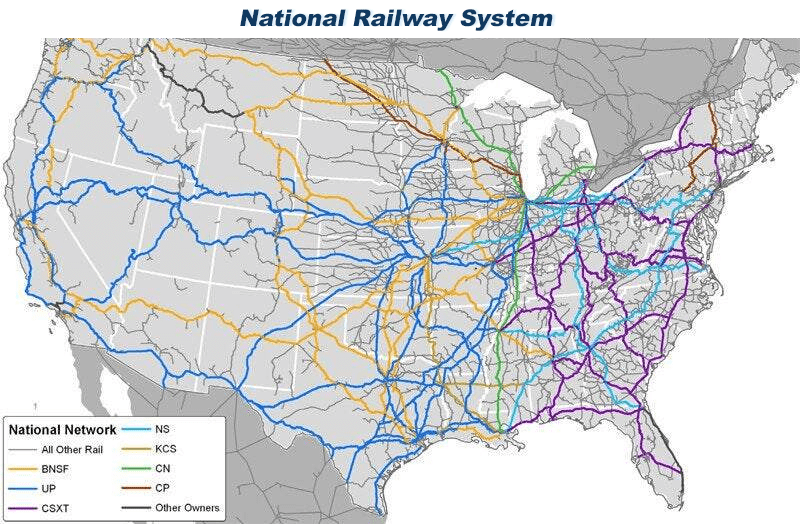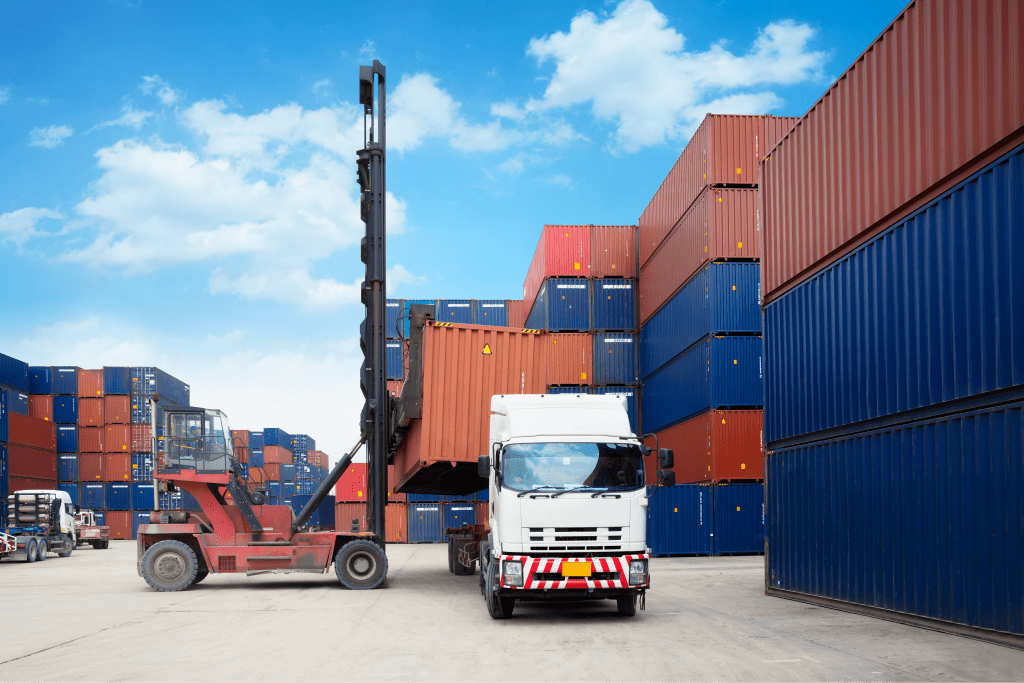Envisioning and Advocating for a More Efficient Transportation System
Recent supply chain sclerosis, congested highways, expected to get more crowded, and projected exponential growth of freight shipping, all in the face of a complete absence of potentially transformative innovations, do not paint a bright future for the US transportation system.
Read more for a vision of a more streamlined and efficient transportation system.
Transportation Infrastructure Planning
The US Department of Transportation Strategic Plan for 2022-2026 proposes “. . . investing in purpose-driven research and innovation to meet the challenges of the present” and “ . . to modernize a transportation system of the future,” it includes few specifics other than promoting “ . . the adoption of noteworthy multimodal transportation system management and operations practices” and investing in “ . .multimodal capacity to improve travel time reliability on congested corridors.”
In other words, building on improvements in the existing paradigm but not transforming it.


Strategic Systemic Integration
A Path to the Future
A new paradigm might integrate the two existing inter-city travel networks, major highways, already congested to a significant degree by trucks, and railroad trackage, largely dormant except as traversed by individual trains and congested by massive marshalling yards.
Apart from the monumental changes in railway management that would be required, radically transformative shipping vehicles would also be required to make this new paradigm a reality. Such vehicles, capable of traveling on integrated highways and railways and autonomously transitionable from one to the other, may be developed based on currently available technology, with relatively minor changes in rail infrastructure.
Such road-rail intermodal vehicles would facilitate more efficient road-rail intermodal travel, enabling direct shipping from freight origination points to destination points, with intermediate driverless long hauls (via rail) and more efficient rail yard transfers. Reduced demand for drivers would also likely result, not to mention the much-improved fuel economy and environmental advantages of truck rail intermodal rail versus highway travel, long touted by the railroad industry.
Railroads, the trucking industry, highway planners, shippers, and major retailers may all benefit individually and collectively from the systemic integration of the two major domestic shipping modes made possible by road-rail intermodal vehicles, as discussed below. Transportation industry researchers, planners, and users cannot and should not overlook these potentially transformative developments.
The Problem. . . .

Shifting Freight from Highways to Railways
- Supply chain sclerosis, driver shortages and roadway congestion threaten to bedevil U.S. freight movement indefinitely. The first two of these problems have been well-reported, the third not so much.
- But projections of over 50% more long haul truck traffic by 2045, as compared to 2015, and 30% more freight volume by 2031 as compared to 2019, suggest we should expect exponentially increased highway congestion in coming years, with no solution to this problem in sight.
- Likewise missing are proposed solutions to the driver shortage and supply chain problems.
- Meanwhile, tens of thousands of miles of intercity railroad trackage lies dormant much of the time.
- Envisioning the movement of significant parts of the load on one intercity transportation network, i.e. the highway system, to the other major intercity transportation network, i.e. the nation’s railway trackage, may be a bold dream, but the alternative may be the mother of all transportation nightmares.
. . . .and The Solution

Integrating Road and Rail with AUTORRs
- AUTORRs (Autonomously drivable Road/Rail vehicles): With the collective commitment of the trucking and railroad industries, as well as that of the shippers who stand most to benefit from the inherent efficiency of the integrated system, development of AUTORRs, well within the scope of presently available technologies, are easily envisioned.
- While commercial success cannot be guaranteed, AUTORRs may be the best long-range solution to the prospective continuing, and possibly much larger, problems of highway congestion, driver shortages and supply chain hang-ups. And large-scale retailers may be the most likely motivators for prototypical development and evaluation of AUTORR concepts. It remains for such large-scale retailers to realize the value of this approach to them and to the transportation industry generally. From railroads’ standpoint, AUTORRs may also lessen railroad marshalling yard congestion and greatly simplify truck-rail intermodal freight transportation.
- Railroads, the trucking industry, highway infrastructure and shippers, particularly including major retailers, all stand to benefit, both individually and collectively, by the systemic integration of the two major domestic shipping modes made possible by AUTORRs. It remains for transportation industry researchers, planners, and users to seize upon this possibly transformative development.
The Problem and The Solution
The Problem

I am a heading
- Supply chain sclerosis, driver shortages and roadway congestion threaten to bedevil U.S. freight movement indefinitely. The first two of these problems have been well-reported, the third not so much.
- But projections of over 50% more long haul truck traffic by 2045, as compared to 2015, and 30% more freight volume by 2031 as compared to 2019, suggest we should expect exponentially increased highway congestion in coming years, with no solution to this problem in sight.
- Likewise missing are proposed solutions to the driver shortage and supply chain problems.
- Meanwhile, tens of thousands of miles of intercity railroad trackage lies dormant much of the time.
- Envisioning the movement of significant parts of the load on one intercity transportation network, i.e. the highway system, to the other major intercity transportation network, i.e. the nation’s railway trackage, may be a bold dream, but the alternative may be the mother of all transportation nightmares.
Integrated Truck-Rail Intermodal Synergistic and Surprising
Integrating railroads’ trackage with highway-capable vehicles would undoubtedly fly in the face of one of railroads’ biggest profitability objectives, namely longer and longer trains, particularly those transporting a single commodity from and to fixed points of origination and destination. But the alternative could be surprising. And that integration might in fact be synergistic.


Growing Truck-Rail Intermodal
Among the benefits of integrating highway-capable vehicles into the railway system could be the expansive and more efficient and more profitable evolution of seamless road-rail intermodal traffic which railroads have long anticipated but seldom realized.

Electric Generation aand Transmission May Also Benefit From Transportation Integration
As electrically powered trucks and railroad engines become more common, as is widely predicted, electrical utilities may also benefit from the envisioned integration of trucking and railroading.

The monumental, potential transformation of railroads and freight transportation described above is presented as a basis for others to consider, to promote and to develop but this vision is unlikely to be realized unless others, particularly legislators and governmental regulators, can be convinced to initiate the steps necessary to evaluate, promote and develop the implementation of this vision. Others who do share this vision are encouraged to join in advocating its realization to relevant legislators, to transportation system regulators and to relevant industry leaders.
Non-confidential comments and questions are invited. E-mail addresses will not be shared without prior approval.
railhighways@gmail.com